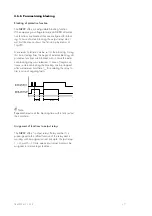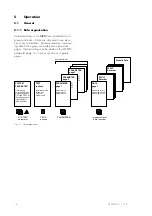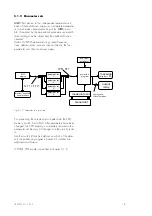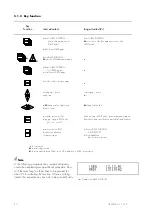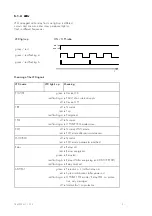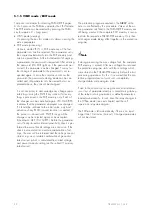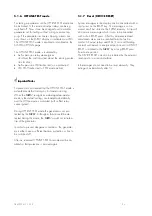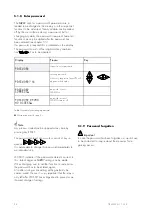
10
TB MRD1-G 11.01 E
Stabilizing
At first approximation this idealized view applies to
stationary states only. In reality other effects, especially
CT errors, may cause the established current difference
to rise, even if there is no internal fault. In such cases a
simple static differential relay would mistakenly trip
and to prevent this stabilizing measures have to be
taken. Possible sources of measuring errors are sys-
tematic and can be duly taken into account.
Stabilizing the
MRD1
means always an action to
make the relay more insensitive.
Fundamental analysis
Distortion factors for differential current measuring are:
•
Measuring errors of angle and value of the CTs
used
•
Poor adjustment of rated CT data to rated genera-
tor data
By these factors a fault current is caused which mainly
depends on the biasing current. This fault current is be-
ing measured as a differential current, although a
generator fault must not necessarily have occured.
When the pickup current is set at a very sensitive
value, each of these factors can cause unintended
trippings. With increasing bias current the pickup cur-
rent has to be corrected upwardly.
The following pickup characteristic (exact characteris-
tic) gives an detailed study of the individual fault fac-
tors and the resulting fault current. In fig. 4 the ex-
pected fault current versus tripping characteristic is
shown.
If a real fault occurs, the measured differential current
exceeds the biasing current caused by operational
conditions. Therefore the pickup characteristic must ex-
ceed the biasing current characteristic by the required
sensitivity value. The exact course can be approxi-
mated by a simplified characteristic consisting of two
linear sections (I and II). The higher the characteristic
begins, the higher the permissible differential current. If
the characteristic begins at a very low point this means
maximum sensitivity. If the pickup characteristic is be-
low the biasing characteristic, systematic effects can
cause unintended trips.
Stabilisierungsstrom
stabilizing current
Is / In
Differenzstrom
differential current
Id / In
I
II
AUSLÖSUNG
TRIP
KEINE AUSLÖSUNG
NO TRIP
tatsächlicher Fehlerstromlinie
exact fault characteristic
Angenäherte Kennlinie
approximated characteristic
Fig. 4:
Typical pickup characteristic (without considering transient processes)
Calculation of the differential current and stabilizing current resulting from the fundamental oscillation (current of
the positive phase sequence system) produces a point on the characteristic. If this point is within the tripping
range, the output relay picks up. In case of harmonics of 4
th
or 5
th
order in the differential current the characteristic
curve is raised up statically by the parameter d[Id] and dynamically by the measuring value m (characterizes the
harmonic contents).

















